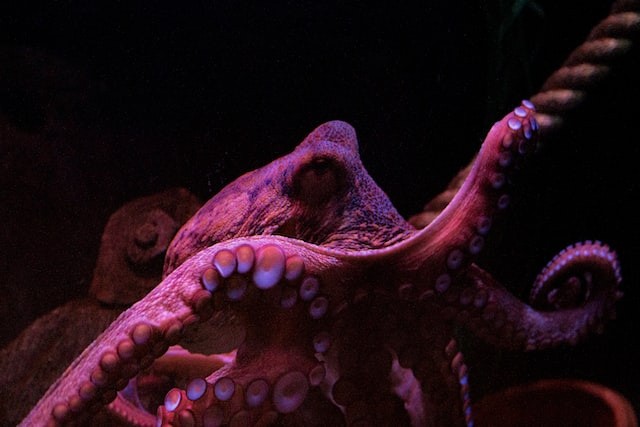Mollusks (Cephalopoda), which include octopuses, squid, cuttlefish, and nautilus, are cephalopods. These are ancient animals present in all of the world's seas that are considered to have evolved 500 million years ago. They include several of the planet's most intelligent species.
A group of scientists discovered a previously unknown species of octopus on Dongshan Island in China's Fujian Province.
Callistoctopus xiaohongxu is a tiny to moderate-sized octopus, weighing less than 40 g in adulthood. The species, known to locals but long misidentified as another, has smooth skin and a reddish-brown hue.
A Chinese octopus' identity has been revealed by scientists

Locals and fishermen were really familiar with the species for a long time, but they kept mistaking it for a juvenile variant of the common long-arm octopus ('Octopus' minor), which is traded all throughout the nation, as per ScienceDaily.
The group of scientists from the Ocean University of China acquired a batch of specimens from Dongshan Seafood Market Pier that had been misdiagnosed as 'O' by locals.
Starting to investigate them, it became clear that this was a distinct, unique species. Callistoctopus xiaohongxu was given its own name, and a scientific description was released in the open-access journal ZooKeys.
The scientific name xiaohongxu is a phonetic translation of the species' native Chinese name in Zhangzhou, where it was discovered.
It refers to its smooth skin and reddish-brown color, which are two of its distinguishingishin characteristics. In its adult stage, C. weighs less than 40 g. xiaohongxu is classified as a small to medium-sized octopus. The researchers also mention that it is the first new species of Callistoctopus discovered in China.
In Chinese seas, more than 130 distinct cephalopod species have been identified. Because of the impact of strong warm currents, the southeast seas of China provide optimal natural conditions for vast marine biodiversity, and the discovery of C. Xiaohongxu confirms the enormous variety of organisms in the Southeast China Sea.
Behavior, reproduction, and conservation status of cephalopods
Cephalopods are incredibly intelligent, highly mobile ocean-dwelling organisms that range in size and lifestyle dramatically, as per ThoughtCo.
They all have at least 8 arms and a parrot-like beak. They have three hearts that circulate blue blood-cephalopod blood is copper-based instead of iron-based like human blood.
Some cephalopods feature sucking tentacles, camera-like eyes, color-changing skin, and complicated learning behaviors.
Many cephalopods, particularly octopuses, are skilled problem solvers and escape artists. They may spew a cloud of ink, bury themselves in the sand, change color, or even let their skin bioluminesce, emit light like a firefly, to hide from their predators or their prey.
Color changes in the skin are created by expanding or contracting pigment-filled sacks in the skin known as chromatophores.
Cephalopods both have male and female sexes, and mating normally involves courtship, which may include skin color changes depending on the species.
Some cephalopod species congregate in large numbers to mate. The male transmits a sperm packet to the female via her mantle orifice using either a penis or a modified arm; females are polyandrous, which means they can be impregnated by numerous men.
Females deposit big yolky eggs in clusters on the ocean floor, producing 5 to 30 egg capsules each containing four to six embryos.
Cephalopods reproduce quickly, and overfishing is rarely an issue. Nacre from nautiluses is highly valued in the United States and internationally, and while they are not on the IUCN Red List, they have indeed been protected under the Convention on International Trade in Endangered Species (CITES) since 2016.
© 2025 NatureWorldNews.com All rights reserved. Do not reproduce without permission.





